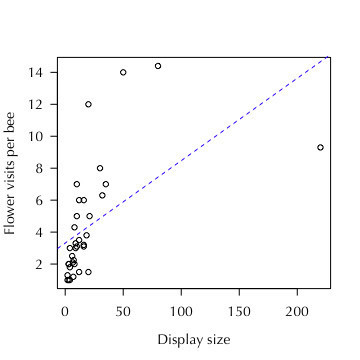Mating by outcrossing plants depends on the frequency and quality of interaction between pollen vectors and individual flowers. However, the historical focus of pollination biology on individual flowers (floricentrism) cannot produce a complete understanding of the role of pollination in plant mating, because mating is an aggregate process, which depends on the reproductive outcomes of all of a plant’s flowers. Simultaneous display of multiple flowers in an inflorescence increases a plant’s attractiveness to pollinators, which should generally enhance mating opportunities. However, whenever pollinators visit multiple flowers on an inflorescence, self-pollination among flowers can reduce the pollen available for export to other plants (pollen discounting) and increase the incidence of inbreeding depression for embryos and offspring. Therefore, the size of floral displays that maximizes mating frequency and quality generally balances the benefits of attractiveness against the costs of self-pollination. This balance can shift considerably if different flowers serve female and male functions at one time (sexual segregation) and flowers are arranged in inflorescences so that pollinators visit female flowers before male flowers. However, the effectiveness of sexual segregation depends on the extent to which a particular inflorescence architecture induces consistent movement patterns by pollinators. In general, the consistency of pollinator movement patterns varies with inflorescence architecture and differs between pollinator types. Such variation creates many options for the evolution of the diverse inflorescence characteristics within angiosperms, which can be appreciated only by moving beyond a floricentric perspective of the role of pollination in plant mating.

Collaborator(s):
Publication(s):
- Harder L.D., Jordan C.Y., Gross W.E. & Routley M.B., 2004, Beyond floricentrism: the pollination function of inflorescences. Plant Species Biol. 19: 137–148 [link][Floricentrism.pdf]